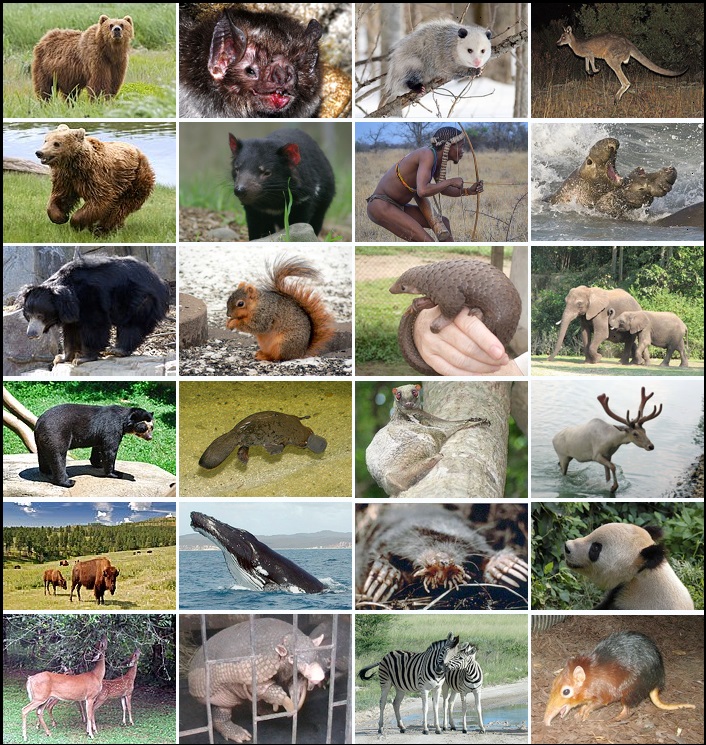The genome of 240 mammal species reveals what makes the human genome unique
The genome of 240 mammal species reveals what makes the human genome unique
The special Science publication points to key parts of the human genome that have remained intact for millions of years.
The Institute of Evolutionary Biology (IBE, CSIC-UPF), and Pompeu Fabra University have participated in the special publication of Science by the Zoonomia Consortium. The publication includes eleven international studies and could provide new information on diseases and unusual traits of the human genome that were unknown until now.
The studies in this publication managed to compare the genomes of 240 mammal species, 4 times more than any previous research, providing a great resource for understanding and conserving genomic biodiversity. In addition, making available the genomes of so many species that differ in phenotypes of biomedical interest (longevity, neoplasia rates, fertility, biometabolite concentration) allows the detailed study of traits highly relevant to animal and human health.
Arcadi Navarro and Tomàs Marqués-Bonet, ICREA research professors, IBE (CSIC-UPF) researchers, and Professors of Genetics at Pompeu Fabra University, participate in the international Zoonomia consortium, which constitutes the comparative resource for genomics largest mammal in the world. By aligning the genomes of 240 mammalian species, the studies identified differences in their DNA that can lead to severe disease or dysfunction in humans.
The Zoonomia project offers, much more detailed than any previous study, a resource that allows studying the regulatory regions of DNA. These regions are quite unknown and difficult to identify with isolated genomes of a single species. In this way, the research has detected and compared highly conserved regions between mammalian species that could fulfill key functions, as well as part of the genetic basis of the characteristic traits of some mammals.

The most conserved genomic regions among mammals serve vital functions
By comparing the genomes of 240 mammalian species, research has identified dozens of regulatory elements in the genome. Some of these genomic regions have not undergone variations in millions of years of evolution and, given their persistence, could reveal functions of vital importance for the proper functioning of mammals.
Thanks to the use of Machine Learning techniques, the study has linked some of these conserved regions with fundamental traits, such as brain size.
For this reason, the study suggests that genetic variations, even small ones, in these highly conserved regions of DNA are likely to cause rare and common diseases in humans, such as cancer.
“These investigations demonstrate, therefore, the usefulness of using genome conservation to study human diseases, since it could facilitate the detection of genetic changes that increase or decrease the risk of a specific disease and that all members of the same species share.” Points out Arcadi Navarro, who has participated in the research with the Zoonomia consortium.
We share 10% of our DNA with other mammals.
According to these studies, at least 10% of the human genome is simultaneously conserved among mammalian species, including the dog, the mouse, the chimpanzee, and the bat. This percentage translates into more than 4,500 almost perfectly conserved elements in the genome of 98% of the species studied.
Most of these elements are outside the DNA regions that code for proteins, the most studied field of DNA. Instead, they code for regulatory elements of genetic information, largely unknown to the scientific community.
“When you study the isolated genome of a single species, you can easily spot proteins, because they are very marked regions with a beginning and an end.” Explains Arcadi Navarro. “Regulatory regions, on the other hand, can only be detected systematically and massively by comparing genomics of different species and observing their evolution. If they are preserved, it is because they have some utility. But if they disappear it is because they did not have an evolutionary advantage or their environment has changed.”
In this way, the most conserved regions of the genome are involved in embryonic development and the regulation of RNA expression. On the other hand, those that change the most have to do with the relationship of the animal with its environment, such as the immune response, and the development of skin, smell, and taste.
Hibernation or a great sense of smell are genetic variations with an evolutionary advantage
Comparative studies can also detect mutations that have lasted over time within a species. Therefore, could have an evolutionary advantage. The research points to regions of the genome associated with a few unique traits of some mammals, such as an extraordinarily large brain, a superior sense of smell, or the ability to hibernate during the winter.
On the other hand, the studies also detected that the species with fewer changes in the conserved regions of the genome have a greater risk of extinction. For this reason, the study concludes that endangered species could be identified with only one reference genome per species. Although there needs to be more research, this practice could be a breakthrough in efforts to conserve biodiversity.
These discoveries come from the analysis of DNA samples collected by more than 50 different institutions around the world, including samples from the San Diego Zoo, which provided many genomes of these threatened or endangered species.
Reference article: Matthew J. Christmas1 †, Irene M. Kaplow2,3†, et al. Evolutionary constraint and innovation across hundreds of placental mammals. Science. Vo.380, NO. 6643, Online April 28, 2023. DOI: 10.1126/science.abn3943
